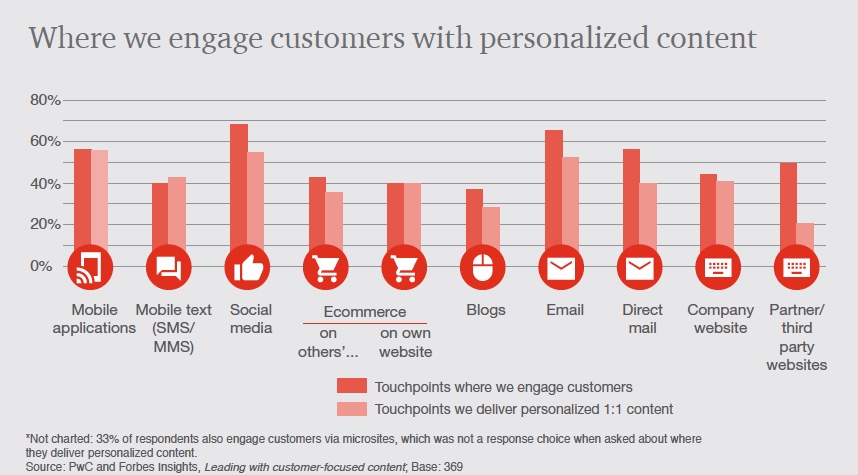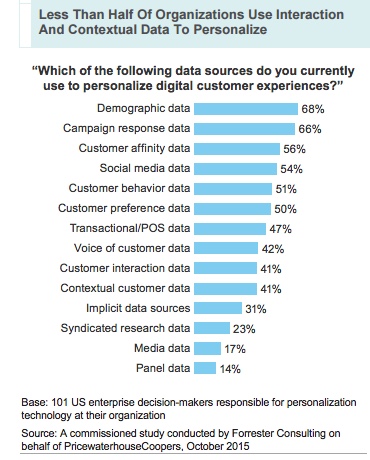Personalization is so…personal, isn’t it? Yet, as consumer expectations grow, companies that choose to prioritize personalization are the ones who will excel in the UX age. The challenge is that few companies have the trifecta of technology, people and processes perfectly aligned to deliver the personal touch. Others are so far down the food chain in terms of all three that it can be difficult to know where to start. With more touchpoints than ever with which to reach target consumers, not only do companies need personalization consistency across channels but they also must harvest all of these new data efficiently and effectively.
Forrester has coined a terrific term for the new customer mindset in the UX age: the “mobile mindshift.” This refers to an expectation that a consumer can (paraphrasing) “get exactly what they want in their immediate context at their immediate moment of need.” Personalization needs to span devices and channels so that wherever the customer goes, whichever touchpoint he or she chooses, the experience is consistent and relevant. That is quite a tall order, isn’t it?

In Personalization, Context Matters!
Although organizations claim that they’ve got a handle on where their customers are, stepping up ones game past a one-off personalized campaign or product recommendation based on some demographic algorithm can be difficult. Context –environmental factors such as time of day, device, even the weather — matters! Yet, Forrester/PWC data demonstrate that contextual data attributes are sourced by only 41% of organizations who say that have integrated personalization to enhance UX.

Start With a Pain Point
At ESG, we spend a lot of time mapping customer journeys to better understand content needs. Not only do these maps reveal key touchpoints primed for content distribution, but they can also reveal important pain points where customers may be having difficulty interacting further. Forrester refers to these pain points as areas where customers may be demanding more of organizations, i.e. where the ‘struggle is real.’ These struggles actually represent places where organizations that are already mapping customers and personas can start to dip their toes into the personalization pool. Smalls steps towards improving these interactions not only reduce customer churn but they may also drive a larger editorial opportunities.
Case in point: consider a potential customer who has visited your site both via mobile and desktop. On both occasions, this person has clicked several links to learn about what the company offers but has not downloaded information. The opportunity is ripe to engage this person the next time s/he visits, noting the time since the last visit and offering a free paper on whatever topic that has been researched. Upon completion of the download registration, the company might offer a free consultation or an opt in to a topic-specific newsletter. In this case, the relationship deepens in real time and perhaps the conversion that the company has been seeking will finally come to fruition.
But what about the technology to support these efforts, technology that offers both adaptive and predictive capabilities? Here, an acceptable workaround is an investment in partners who can assist with strategic and technical needs. Among a group of global CEOs who participated in the Forrester/PWC survey, the value of such service partners to manage customer data, design experiences and create and execute personalization/content strategies was highlighted by more than half. A strategic partner may also be better versed to assist companies with defining the privacy/personalization line as well as with a plan on how to best measure the impact and value of content and where and when to optimize it.
The personalization train has left the station and organizations don’t have any choice but to catch up. Choose a pain point and dive in. Just remember that people, processes and technology must be aligned for the big win in this arena.

